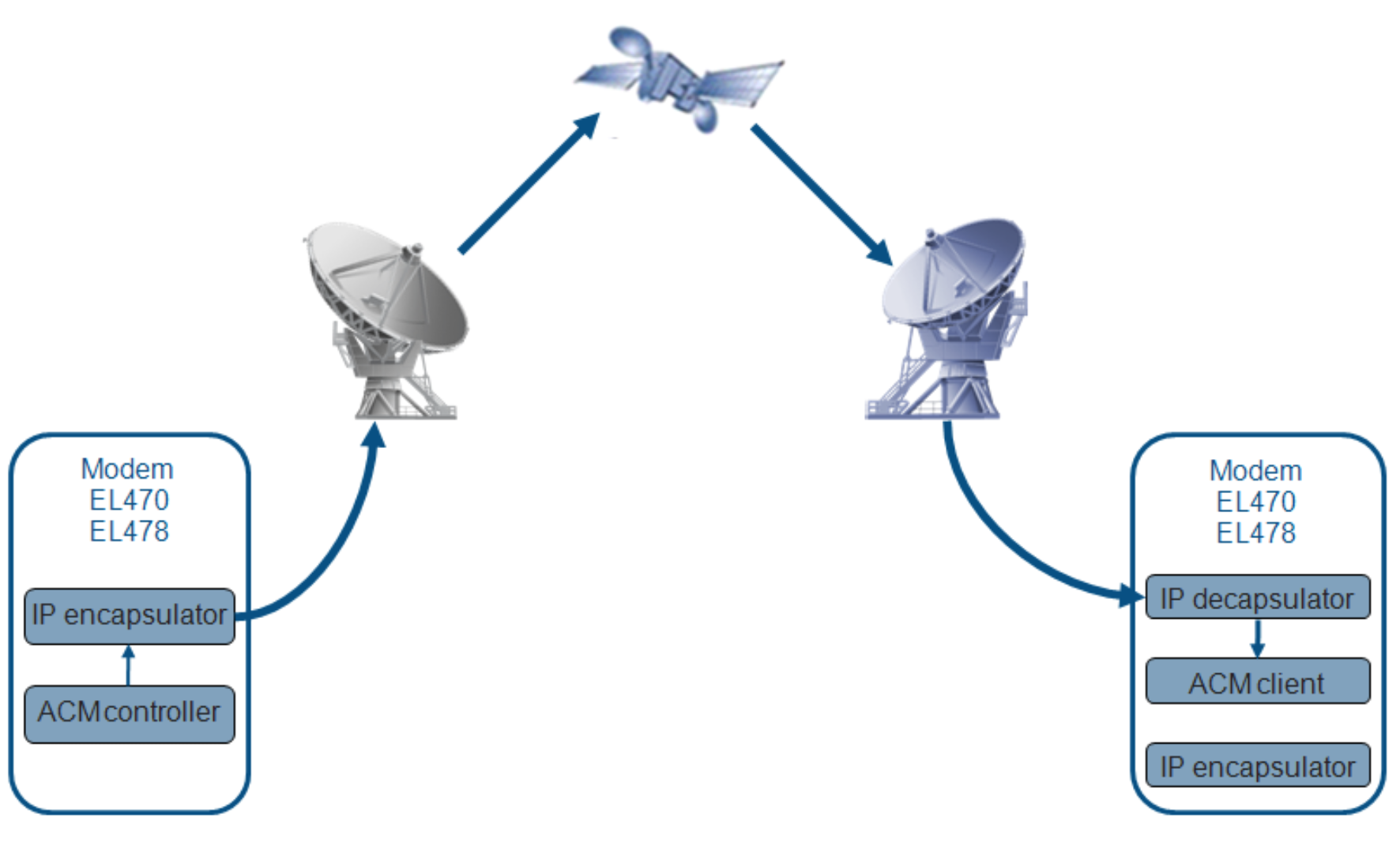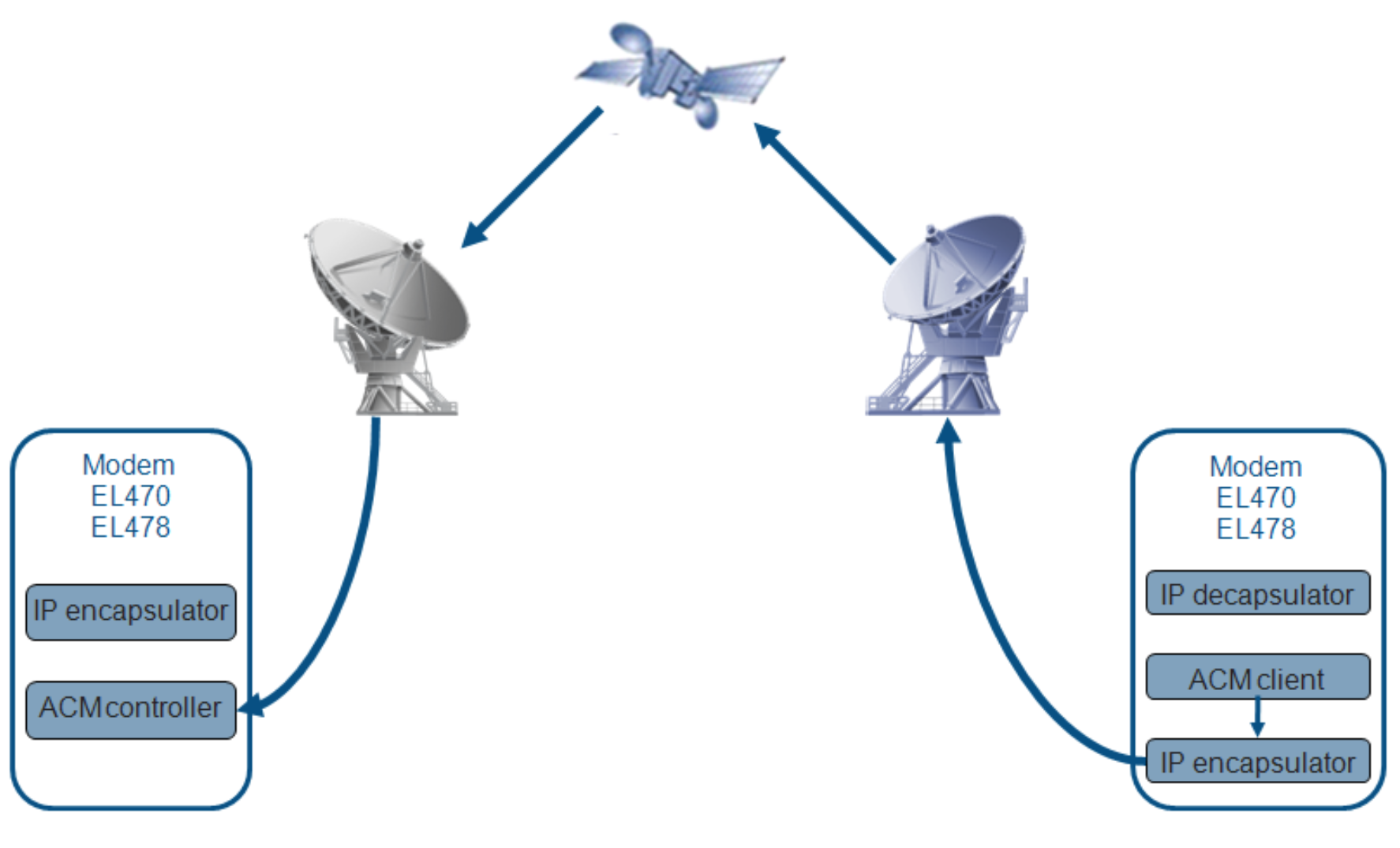FlexACM » History » Version 5
« Previous -
Version 5/10
(diff) -
Next » -
Current version
GAY, Adrien, 12/15/2014 06:18 PM
FlexACM¶
FlexACM In-band signalling on the forward link:
FlexACM In-band signalling on the return link:
As seen previously, the demodulator selects the optimal MODCOD based on the estimation of the signal Es/N0. However, the choice of the MODCOD is not only based on the comparison of the Es/N0 with the theoretical thresholds as distortion of the signal has to be taken into account (distortions from the channel or causes by a saturated transponder for examples). Moreover, we add some margin in the link budget by safety.
Then, the MODCOD is chosen by comparison of the estimated Es/N0 with the theoretical threshold of the MODCOD + the distortion + the margin, as shown on the figure below:
(figure p 124 newtec user manual).We can notice on this figure that margin for selecting a higher MODCOD is higher that margin for selecting a lower MODCOD. This is advised by the constructor to create hysteresis and avoid togglings of MODCODS for specific values of Es/N0.
The distortion is estimated thanks to a NoDE (Noise and Distorsion estimator) feature implemented in the modem, margins can be set up by the user and the table below shows the different thresholds for the MODCODs:
Table thresholds MODCODOnce the optimal MODCOD has been estimated at the demodulator, this information is sent back to the emitter side. Two options are possible: in-band or out-band signaling. This last one does not send the signaling messages back via the satellite but use another possible links (via a terrestrial network for example); it is not the one chosen for this project. We used in-band signaling, consisting in sending the MODCOD signaling messages directly via the return channel of the satellite link as non routable encapsulated IP packets.
